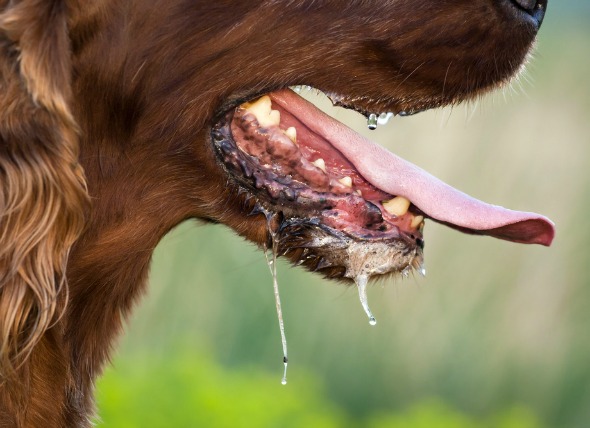
Nasal and paranasal fibrosarcoma is characterized by a malignant tumor based in the connective tissue of the nasal passage or in the surrounding area. A fibrosarcoma specifically refers to the abnormal development of cells. It is typically a slow and invasive process that progresses to a critical state before it is discovered.
This medical condition usually affects dogs between the ages of nine and twelve. Gender is associated with this condition as well, with male dogs being more prone to fibrosarcoma than females. If treated, a dog can continue to have a life span of up to 36 months, versus five months, if left untreated.
The condition or disease described in this medical article can affect both dogs and cats. If you would like to learn more about how this disease affects cats, please visit this page in the PetMD health library.
The abnormal cell development typically begins on one side of the sinus cavity (or nasal passage), but typically moves to the other side over time. There are a variety of outward signs that can develop, including:
The causes for fibrosarcoma are currently unknown.
There are several other medical conditions that must be ruled out prior to diagnosing fibrosarcoma, including bacterial, viral and fungal infections in the sinuses, hypertension (high blood pressure), parasites, foreign bodies, tooth root abscesses, and facial trauma. Magnetic resonance imaging (MRI) and computed tomography (CT) imaging can be helpful for reviewing the size of the tumor growth and how far it has spread, as well as whether the cells have spread into other parts of the dog's body.
Surgery may be used to remove the abnormal cells discovered. Radiotherapy and chemotherapy may also be effective at reducing the abnormal cell count.
If radiotherapy treatment is successful, dogs can live up to 36 months. However, dogs left untreated have a survival rate of less than five months.
There are side effects to both radiation and chemotherapy treatments, so it is important to make your dog as comfortable as possible while working with your veterinarian to reduce the impact of side effects.
Nasal fibrosarcomas that affect the brain are even more rare than nasal fibrosarcomas, but there have been documented cases of their occurrence. Unfortunately, if the nasal fibrosarcoma goes unnoticed or untreated, the abnormal cells can travel to the brain, and under these circumstances the prognosis is very poor.
There are currently no known preventative measures for fibrosarcoma.
 High Blood Pressure in Dogs
Systemic Hypertension in Dogs
More commonly refer
High Blood Pressure in Dogs
Systemic Hypertension in Dogs
More commonly refer
 Excessive Production of Saliva in Dogs
Ptyalism in Dogs
Ptyalism is a condition characte
Excessive Production of Saliva in Dogs
Ptyalism in Dogs
Ptyalism is a condition characte
 Heart Defect (Congenital) in Dogs
Patent Ductus Arteriosus in Dogs
The aorta is the
Heart Defect (Congenital) in Dogs
Patent Ductus Arteriosus in Dogs
The aorta is the
 Brain Tumors in Dogs
A tumor is defined as an abnormal growth of cells
Brain Tumors in Dogs
A tumor is defined as an abnormal growth of cells
 Paralysis Due to Spinal Cord Injury in Dogs
Myelomalacia in Dogs
“Myelomalacia” o
Paralysis Due to Spinal Cord Injury in Dogs
Myelomalacia in Dogs
“Myelomalacia” o
Copyright © 2005-2016 Pet Information All Rights Reserved
Contact us: www162date@outlook.com